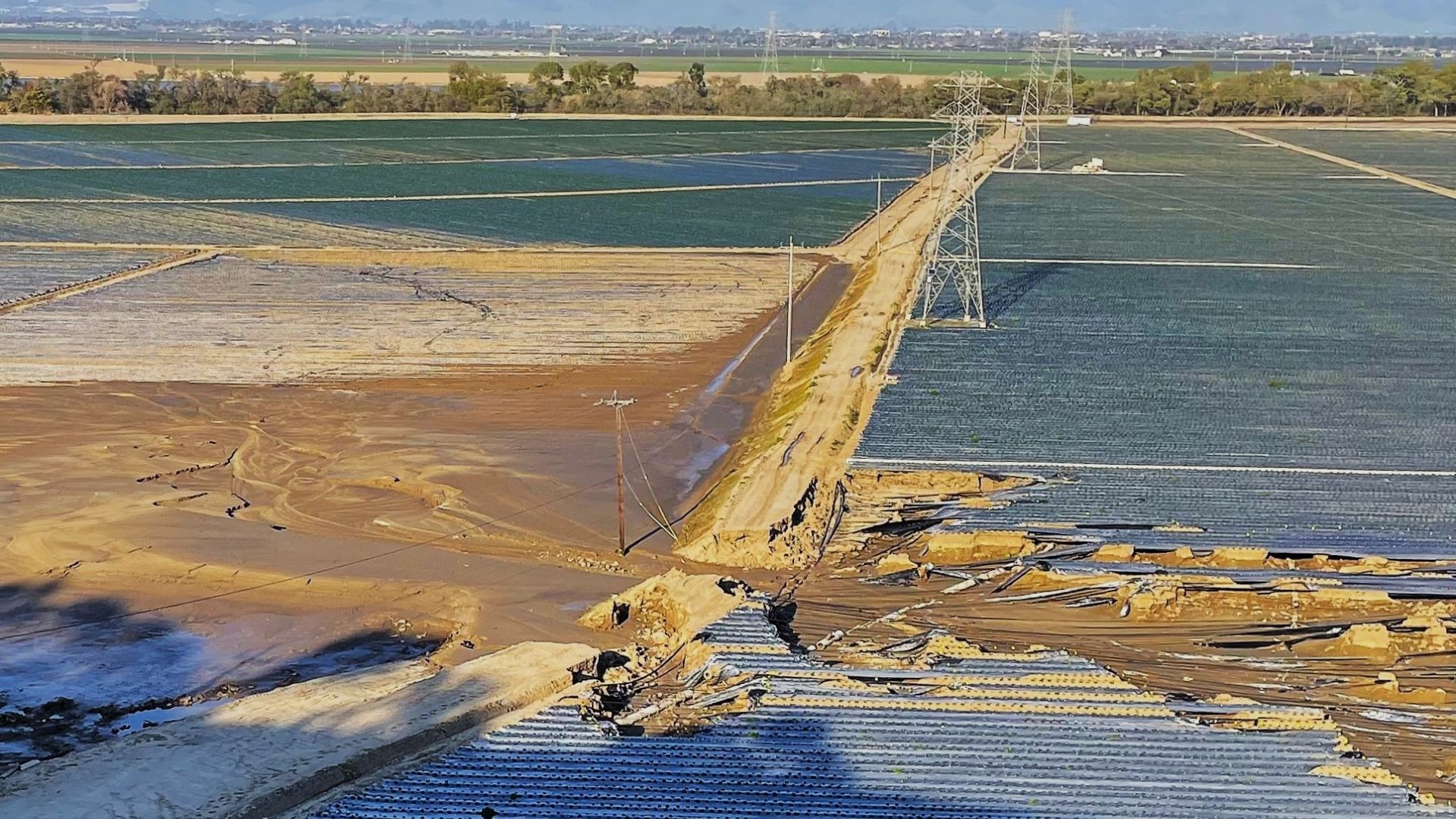CSUMB ag experts say winter rains to have lasting impact

Salinas ag fields damaged by 2023 winter rains
April 6, 2023
By Mark Muckenfuss
From disrupting the lives of thousands of farmworkers to increasing the cost of a box of strawberries, experts at CSU Monterey Bay say the impacts of recent winter storms and the resulting flooding of agricultural fields could be significant.
Gauging that impact is difficult. But CSUMB soil scientists and business experts say it is likely that at least one growing cycle and possibly more will be lost. And with Monterey County producing more than half of the nation’s lettuce and celery, and 28% of its strawberries, consumer prices for such produce are expected to be higher.
“If there are fewer crops to be harvested and less supply, there will probably be a significant impact on the consumer,” said lecturer Meagan Hynes, a soil scientist and adjunct researcher. “Knowing how far out it's going to impact things is going to depend on how many more storms we get. Essentially, you’re resetting the clock each time it rains.”
Damage from the rain and flooding is still being assessed. But Monterey County officials estimate January storms alone cost the region $336 million. February and March storms were likely even more destructive.
It will take time for the water to either evaporate or settle into the soil. Before that happens, conditions will prohibit the use of tractors and other heavy machinery on the land, delaying the planting of the next crop cycle. Additionally, there is concern that flood waters may have deposited sewage or harmful chemicals onto growing areas. Testing to make sure the soil is safe may mean another 60-day delay after the water is gone.
When the fields can’t be worked, fieldworkers are the first to feel it. Sumadhur Shakya, a professor of operations management, said the annual migration of workers from desert regions such as El Centro and Yuma, Arizona, has been delayed. Those who are not migratory workers or who were already in Monterey County, are being hit hard, he said.
“Laborers are not living in Monterey and Carmel,” Shakya said. “They are staying in areas that are prone to flooding, as we saw when the levee broke at Pajaro. They may have a tough time finding a place to live and not having a sufficient amount of work.”
Delays in planting will hurt the labor force even more, Shakya said, but he doesn’t see the average consumer being affected much. Supply sources are diverse enough, he said, that there aren’t likely to be empty shelves in the supermarket.
“This industry will fulfill their orders even if they have to go to Mexico or Chile,” he said, adding that Florida strawberries may be brought in as well. “That may translate into higher prices. Not too much, I would say.”
Scott Fausti, a professor of agribusiness, agrees that supply will not likely be a noticeable issue for consumers. But he too sees a price impact, particularly when it comes to strawberries, which he said is the hardest-hit crop at this point. Reports he has received indicate as much as 20% of local strawberry fields were flooded. Berries from Florida and Mexico will mitigate that impact.
But, Fausti said, “I would venture that consumers may not see berry prices decline as much as they usually do as we get toward summer.”
As far as other crops, Hynes said vegetables such as broccoli, cauliflower and Brussels sprouts will likely see delayed planting or, if the delay is long enough, no planting at all this year. She said the long-term effects of the flooding could be both positive and negative.
An abundance of nitrogen and phosphorus washed downstream from fertilized soil, could lead to a condition known as eutrophication, causing excessive growth of aquatic plants in irrigation canals and, ultimately, low oxygen levels in the water. That could lead to pollution from decaying plants and dead fish.
Runoff and deposition of sediment could also result in a stratification of soil, with silts and clays being laid on top of sandier soils. That can create irrigation challenges for farmers, she said.
On the plus side, the excess water could recharge drought-thirsty soils, particularly those with good drainage, Hynes said.
The full impact won’t be known for some time.
“You have to wait for the soils to dry out,” she said.